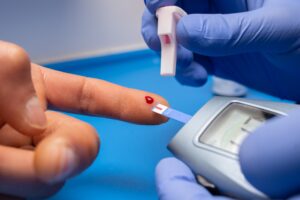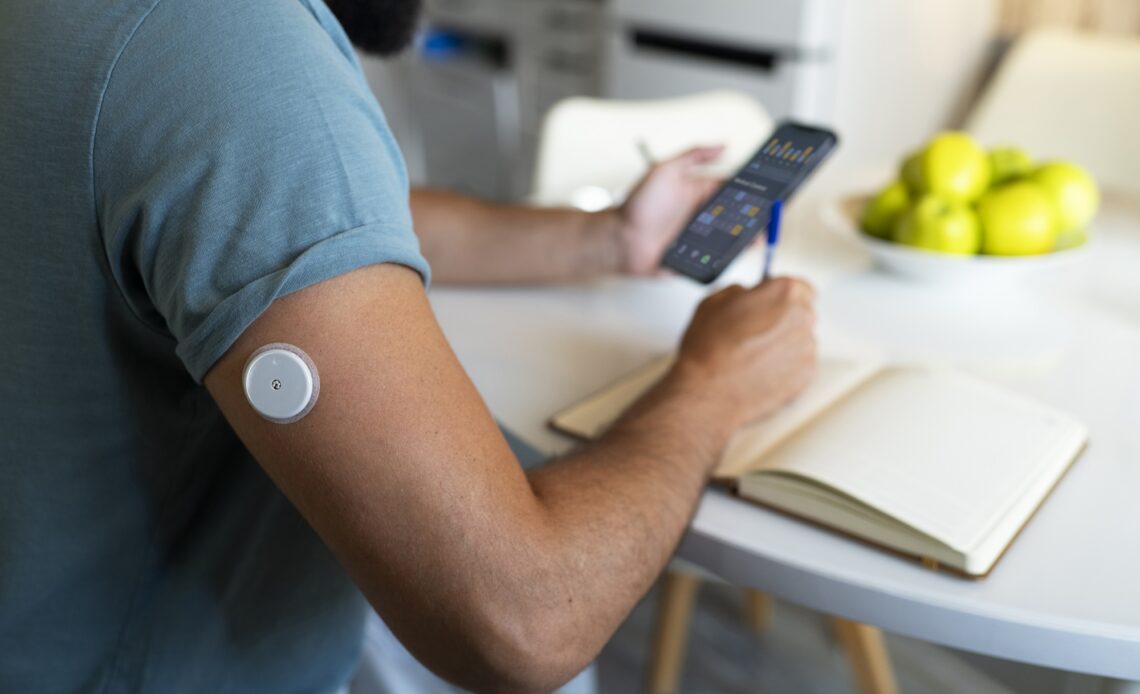Insulin resistance is a prevalent health condition that affects millions of individuals worldwide. It occurs when the body’s cells become less responsive to the hormone insulin, leading to a disruption in the regulation of blood sugar levels. This condition is closely linked to the development of type 2 diabetes, metabolic syndrome, and other chronic health issues, making it crucial for individuals to monitor and manage their insulin resistance effectively. With the advent of advanced technology, monitoring insulin resistance has become more accessible and precise. Modern tech innovations, such as continuous glucose monitors (CGMs), wearable devices, and mobile health apps, provide real-time data on blood sugar levels and insulin sensitivity.
These tools enable individuals to track their condition more accurately, identify patterns, and detect early warning signs, allowing for informed decisions about lifestyle choices, dietary habits, and medication regimens. Moreover, tech-enabled monitoring is essential not only for those already diagnosed but also for individuals at risk of developing insulin resistance. Early detection and intervention through these advanced tools can significantly improve the chances of preventing or delaying the onset of insulin resistance-related disorders, ultimately enhancing overall health and quality of life. As technology continues to advance, the options for monitoring insulin resistance are becoming increasingly sophisticated, user-friendly, and effective.
Traditional Methods of Monitoring Insulin Resistance
Historically, healthcare professionals have relied on various traditional methods to monitor insulin resistance, each with its own strengths and limitations. One of the most commonly used approaches is the fasting blood glucose test, which measures the amount of glucose in the blood after an overnight fast. This test provides a snapshot of an individual’s blood sugar levels, but it does not account for the dynamic fluctuations that occur throughout the day.

Another traditional method is the oral glucose tolerance test (OGTT), which involves administering a standardized glucose solution and then measuring the body’s ability to clear the glucose from the bloodstream over a two-hour period. This test provides more comprehensive information about insulin sensitivity, but it can be time-consuming and inconvenient for individuals, as it requires them to visit a healthcare facility and undergo a prolonged testing procedure.
In addition to these blood-based tests, healthcare professionals have also utilized various indirect measures of insulin resistance, such as the homeostatic model assessment (HOMA) and the quantitative insulin sensitivity check index (QUICKI). These methods rely on mathematical models that incorporate fasting blood glucose and insulin levels to estimate an individual’s insulin sensitivity. While these indirect measures can provide valuable insights, they may not always accurately reflect the true extent of insulin resistance, particularly in complex cases or individuals with fluctuating insulin levels.
Tech Innovations in Monitoring Insulin Resistance
As technology has advanced, a new era of innovative solutions has emerged to revolutionize the way individuals monitor and manage their insulin resistance. These tech-driven advancements have not only improved the accuracy and convenience of insulin resistance monitoring but have also empowered individuals to take a more active role in their healthcare.
Continuous Glucose Monitoring (CGM) Devices:
One of the most significant tech innovations in the field of insulin resistance monitoring is the development of continuous glucose monitoring (CGM) devices. These compact, wearable sensors continuously track an individual’s glucose levels throughout the day, providing a comprehensive and detailed picture of their body’s response to insulin.
Unlike traditional finger-prick blood glucose tests, which only provide snapshots of glucose levels, CGM devices use a small sensor inserted under the skin to measure glucose levels in the interstitial fluid. The device wirelessly transmits these measurements to a handheld receiver or a compatible smartphone app, allowing individuals to monitor their glucose fluctuations in real-time and gain valuable insights into their insulin sensitivity.
The data collected by CGM devices can be used to identify patterns, detect trends, and uncover the impact of various factors, such as diet, exercise, and stress, on an individual’s insulin resistance. This information empowers individuals to make more informed decisions about their lifestyle choices and medication regimens, ultimately leading to better management of their insulin resistance and overall health.
Insulin Pumps with Built-in Monitoring Capabilities:
Another innovative tech solution for monitoring insulin resistance is the integration of continuous glucose monitoring capabilities into insulin pumps. These advanced insulin delivery devices not only automatically administer insulin based on the user’s glucose levels but also provide real-time data on the individual’s insulin sensitivity and response to various factors.

By combining insulin delivery and glucose monitoring functionalities, these integrated systems offer a more comprehensive approach to managing insulin resistance. Individuals can closely track their insulin needs, observe the impact of their insulin doses on their glucose levels, and make adjustments to their treatment plan as needed. This seamless integration of technology helps to optimize insulin management, reduce the risk of hypoglycemic episodes, and ultimately improve overall health outcomes.
Healthcare professionals can share the data collected by these integrated insulin pump and CGM systems, allowing for more informed and personalized treatment decisions. This collaboration between individuals and their healthcare team can lead to more effective management of insulin resistance and a better understanding of the unique factors that influence each person’s condition.
Wearable Devices for Monitoring Insulin Resistance:
In addition to CGM devices and integrated insulin pump systems, the rise of wearable technology has introduced a new wave of innovative solutions for monitoring insulin resistance. These wearable devices, such as smartwatches and fitness trackers, are designed to provide a comprehensive overview of an individual’s overall health and wellness, including insights into their insulin sensitivity.
These wearable devices often incorporate a range of sensors that can track various physiological parameters, including heart rate, physical activity, sleep patterns, and even body temperature. By analyzing this data, wearable devices can provide valuable insights into an individual’s insulin resistance, helping them to identify potential triggers, monitor the impact of lifestyle changes, and make more informed decisions about their health management.
Mobile apps and cloud-based platforms are integrating with many wearable devices, allowing individuals to easily track, analyze, and share their insulin resistance data with their healthcare providers. This seamless integration of technology enables a more collaborative approach to managing insulin resistance, where individuals and their healthcare team can work together to develop personalized treatment strategies and monitor their progress over time.
Smartphone Apps for Tracking Insulin Resistance:
Alongside the advancements in wearable technology, the proliferation of smartphone apps has also revolutionized the way individuals monitor and manage their insulin resistance. These user-friendly mobile applications provide a convenient and accessible platform for individuals to track their insulin levels, blood glucose readings, and other relevant health metrics.
Many insulin resistance-focused apps offer features such as food logging, exercise tracking, and insulin dose management, allowing individuals to gain a comprehensive understanding of the factors that influence their insulin sensitivity. Some apps even incorporate machine learning algorithms to identify patterns and provide personalized recommendations for managing insulin resistance, such as suggesting dietary changes or adjustments to medication regimens.

Furthermore, these smartphone apps often integrate with other tech innovations, such as CGM devices and wearable trackers, seamlessly syncing data and providing a centralized hub for monitoring insulin resistance. This integration enables individuals to access all their relevant health information in one place, making it easier to identify trends, spot potential issues, and collaborate with their healthcare providers.
The Future of Tech Innovations in Monitoring Insulin Resistance
As technology continues to advance, the future of insulin resistance monitoring is poised to become even more sophisticated and user-friendly. Emerging innovations in artificial intelligence and machine learning are expected to significantly enhance the accuracy, personalization, and accessibility of insulin resistance monitoring solutions.
One potential advancement is the integration of AI-powered algorithms into insulin resistance monitoring devices and apps. These algorithms can analyze the vast amounts of data collected from various sources, such as CGM devices, wearable trackers, and user-inputted information, to identify patterns, predict trends, and provide personalized recommendations for managing insulin resistance.
For example, AI-powered systems could use machine learning to detect early warning signs of insulin resistance, enabling individuals to take proactive steps to prevent the development of more serious health conditions. These systems could also suggest tailored dietary and exercise plans based on an individual’s unique insulin sensitivity and lifestyle factors, empowering them to make more informed decisions about their health management.

Additionally, the future of insulin resistance monitoring may involve the integration of telemedicine and remote patient monitoring technologies. This could allow healthcare providers to closely track their patients’ insulin resistance data, provide real-time feedback and guidance, and adjust treatment plans as needed, even from a distance. Such advancements could significantly improve access to specialized care, particularly for individuals living in remote or underserved areas.
As technology continues to evolve, the possibilities for enhancing insulin resistance monitoring are endless. From advancements in sensor technology and data analysis to the integration of personalized healthcare solutions, the future holds great promise for individuals seeking to take control of their insulin resistance and lead healthier, more balanced lives.
Conclusion
In the ever-evolving world of healthcare technology, the monitoring of insulin resistance has undergone a remarkable transformation. The development of innovative solutions, such as continuous glucose monitoring devices, integrated insulin pump systems, wearable trackers, and smartphone apps, has empowered individuals to take a more active role in managing their insulin resistance and overall health.
By embracing these tech innovations, individuals with insulin resistance can take control of their health, make informed decisions, and ultimately, improve their quality of life. The future of insulin resistance monitoring is bright, and the empowerment it provides to individuals will undoubtedly have a profound impact on the way we approach and manage this prevalent health condition.


